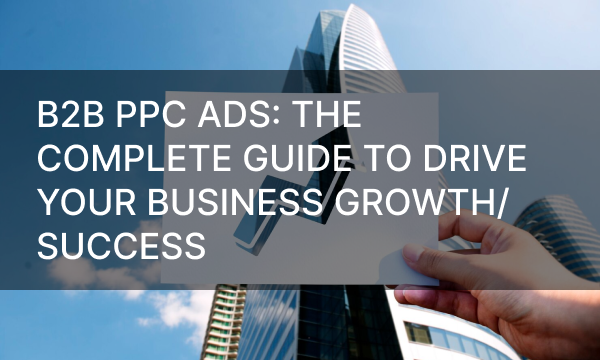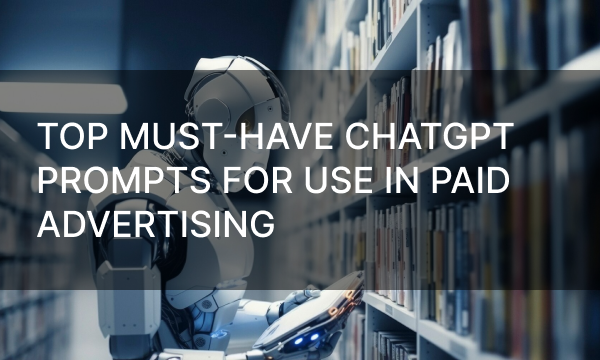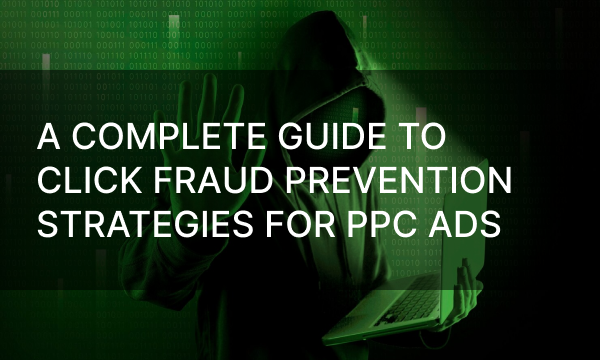Introduction to PPC advertising strategy and the importance of maximizing ROI to optimize your marketing budget.
PPC advertising as a highly efficient method for attracting targeted traffic is more than simply purchasing clicks. It is a strategic framework for connecting with potential customers when they are actively looking for products or services. As businesses increasingly rely on digital avenues to expand their customer reach, mastering PPC advertising is crucial. This not only offers instant visibility but also provides essential insights to enhance marketing strategies.
Measuring ROI is fundamental to the success of any PPC campaign. It is a vital metric for understanding PPC campaign performance. For businesses aiming to use their marketing budgets wisely and drive long-term growth, maximizing ROI is essential. A well-organized PPC strategy enables you to optimize your advertising spend while ensuring that every dollar plays a meaningful role in increasing both financial revenue and brand visibility.
Nobody enjoys the thought of a wasted advertising budget, yet it can be challenging to determine which spends are truly delivering results. That’s why it’s crucial to identify which strategies outperform others. How can you know which platforms bring the highest quality leads for your clients?
In this article, we will delve into a range of PPC advertising strategies and offer valuable insights on measuring and improving ROI. By embracing the relationship between PPC techniques and ROI, you can optimize your advertising budget and PPC strategy to achieve outstanding outcomes. Let’s dive into the leading tools and tips to help you increase your ROI.
Tip 1: A Strong Understanding of ROI
Without a complete picture of overall marketing performance, identifying both high- and underperforming channels becomes a puzzle. By utilizing appropriate tracking and recording tools, you can gain essential insights and adjust your strategies to reduce unnecessary ad spend. A detailed understanding of your ROI directly guides the allocation and optimization of your marketing budget. This requires a deep analysis including the various factors that influence revenue generation and cost-effectiveness.
By breaking down your PPC campaigns into keywords, ad placements, audience demographics, and time slots you can recognize the elements that generate the best returns. By adapting your strategies in real time you can customize your budget spend to maximize ROI through informed, data-driven choices. User interactions with ads, landing pages, and conversion pathways reveal key touchpoints for further optimization.
To fully understand ROI, it’s crucial to go deeper than the basic financial performance metrics. A diverse approach includes not only the numerical data reflected in your financial reports but also the qualitative elements that can impact your business strategy. Gaining insight into how various audience segments react to different messaging or creative formats can result in more tailored ads that will effectively engage potential customers.
Advanced analytics tools and techniques, such as attribution modeling or customer lifetime value evaluations, provide a clearer understanding of how various initiatives affect your overall profitability. A time frame shows which investments provide quick returns, while others take longer to build value, affecting both cash flow and strategic planning. An in-depth ROI analysis that combines quantitative data with strategic insight helps you make informed investment decisions that meet your business goals.
Tip 2: Ongoing Monitoring and Adjustment
Regularly monitoring and adjusting your advertising allows your strategies to align with consumer behavior and market trends. It’s crucial to track key performance indicators such as CTR, conversion rate, CPC, and overall ROI to evaluate the success of PPC campaigns. CTR indicates how well your ads attract interest, while conversion rates show how effectively those clicks are converted into sales or other desired targeted actions.
Monitoring CPC is important to assess the cost-effectiveness of your ad investments. An increase in CPC may require you to reassess your bidding strategies or keyword selection for budget efficiency. If specific keywords have a high CTR but low conversion rates, this may indicate a disconnect between the ad messaging and user intent. This can help you refine your ad copy or adjust your targeting to attract a more relevant audience.
Ongoing testing and optimization of the ad copy and landing pages is crucial. Conducting A/B tests on various elements can identify what resonates best with the target audience, enabling data-driven adjustments that enhance engagement and conversions. By implementing conversion tracking and regularly reviewing campaign performance metrics, you can make informed decisions about reallocating budgets to higher-performing campaigns or keywords, ultimately strengthening the overall PPC strategy.
Tip 3: Smart PPC Budget Management
Effectively managing your PPC budget is crucial for maximizing ROI in your PPC campaigns. Having clear goals defining your marketing strategy will help you control your PPC budget. Comprehensive keyword research pinpoints high-performing keywords that not only generate clicks but also convert visitors into customers. Regular A/B testing of ad copy, landing pages, and bidding strategies reveals the most effective parts of a PPC campaign, enabling timely adjustments to respond to market conditions.
Implementing techniques like dayparting — scheduling ads to run during peak performance periods — can further optimize budget efficiency by focusing resources on times when prospects are most likely to engage. Automated bidding strategies allow for effective budget management, as these algorithms can modify bids in real-time based on performance and competition, helping to avoid overspending while maximizing results.
Setting realistic budget limits for ad campaigns promotes resource allocation and helps set achievable performance goals to meet broader business objectives. It’s vital to know the potential constraints of your PPC budget, including industry benchmarks, seasonal fluctuations, and differences in ad platforms’ performances. This helps set a baseline budget that meets your business goals while still considering the potential need for flexibility. Smart budget management avoids overspending, ensuring that resources are allocated to the most effective channels and formats.
Maximizing ROI isn’t just about cutting costs. It also involves increasing revenue through better customer engagement and retention strategies. A data-driven approach ensures that every dollar is spent in alignment with broader business goals, assuring informed decision-making that elevates a company’s competitive edge. PPC budget optimization drives immediate financial returns and lays the groundwork for long-term strategic success, making it an indispensable component of modern marketing tactics.
Tip 4: Leveraging Advanced PPC Tools
Numerous popular PPC management tools, such as Google Ads, Bing Ads and Facebook Ads Manager, provide distinct features designed to improve campaign effectiveness by offering powerful capabilities for keyword research, ad creation, and performance analysis.
To further enhance PPC strategies, the following advanced tools play a crucial role by simplifying repetitive tasks through automation:
- WordStream provides advertisers with comprehensive tools for managing Google Ads and Facebook Ads
- PromoNavi automates various aspects of PPC campaigns, such as keyword planning, ad testing, and reporting
- SEMrush covers SEO, content marketing, social media management, and competitor analysis
Leveraging AI, machine learning and natural language processing in PPC strategies improves targeting accuracy and budget efficiency, and provides you with valuable insights, ensuring the success of ongoing campaigns and leading to higher conversion rates and business growth:
- The incorporation of artificial intelligence and machine learning into PPC management facilitates predictive analytics that can project advertising trends by analyzing historical data to better anticipate market changes and consumer behaviors. AI-driven insights help dynamically refine PPC campaigns to optimize ad copy, keyword selection, and bidding strategies to use the ad budget effectively.
- Machine learning continually improves PPC advertising models as they absorb new data, increasing their predictive accuracy over time. Further enhancing PPC campaign optimization, AI can dynamically allocate budgets across different channels and ad groups, directing resources toward high-performing ads while minimizing expenditures on those that are underperforming.
- Natural language processing in PPC management can refine ad copy by generating messages that strongly connect with specific target audiences, tailoring the language and tone according to customer interactions and engagement data. As these systems constantly learn from user behavior, they can experiment with various ad versions in real-time, speeding up the optimization process.
Common Mistakes to Avoid in PPC Strategy
 Photo by JESHOOTS.COM on Unsplash
Photo by JESHOOTS.COM on Unsplash
PPC advertising can significantly boost traffic and conversions, but many advertisers succumb to common pitfalls that can hinder their success. The most common error is neglecting comprehensive keyword research, which results in wasted budget. Underperforming keywords are indicated by low CTR or high CPC without conversions. Additional signals to notice include stagnant or declining performance metrics, such as reduced impressions or increased bounce rates, indicating that ads don’t reach the audience.
To fix this problem, it’s crucial to adopt a strategic approach to managing budget, directing funds towards high-performing areas while reducing spending in underperforming ones. Regularly analyzing and adjusting PPC campaigns, you can ensure they align with both market trends and your business aims. By identifying common pitfalls and avoiding them, you can improve campaign performance, optimize ad budgets, and maximize ROI.
Bear in mind that not leveraging A/B testing can hinder strategic growth. Consistently testing different elements of ads, from headlines to call-to-action phrasing, can bring insights that significantly improve campaign performance. It is equally crucial to keep an eye out for negative keywords. Without them, campaigns risk showing up for irrelevant searches that drain budgets without yielding conversions.
Ignoring analytics and not adapting campaigns according to performance data is a significant mistake. Ongoing analysis of metrics like CTR, ROI and conversion rates is essential for refining PPC initiatives. Additionally, misalignment between PPC campaigns and broader business goals can lead to disjointed efforts and lost growth opportunities. Therefore, it is crucial to ensure that every element of the PPC strategy is aligned with the brand’s goals. By avoiding these pitfalls, you can greatly improve the performance of your PPC campaigns, which will ultimately lead to enhanced ROI.
Conclusion
Effectively managing a PPC advertising budget to maximize ROI is vital for businesses aiming to succeed in the competitive digital environment. Conducting comprehensive research reveals high-performing metrics that drive traffic and convert leads into sales. Management tools provide valuable insights into search volume, competition levels, and CPC.
Addressing specific issues and eliminating product offerings that don’t resonate with the target audience allows you to focus your budget on more promising search terms, ensuring the overall success of your campaigns. By reallocating funds to high-performing parameters and refining your targets, you can reduce wasteful spending and boost the overall efficiency of PPC campaigns. These four optimization strategies will help you manage your budgets efficiently while achieving a higher ROI and driving growth.



